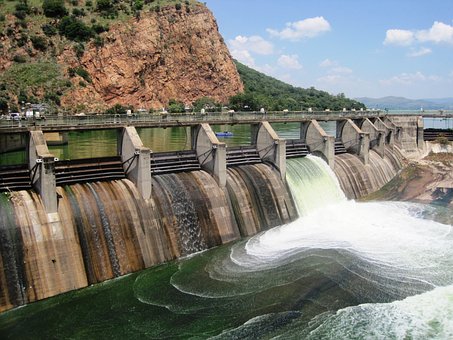Dams could play a big role in feeding the world more sustainability

Water is a basic need of humans. It ensures the proper survival of humans. The future has no predictions. So, it is very necessary to preserve water so that future generations will not suffer from the problems of water scarcity.

Keywords: water storage, irrigation, dams, hydrological cycles, sustainable irrigation
The study published in PNAS shows what would be the requirements of water storage for maximizing crop irrigation. It ensures this without depleting water stocks or encroaching on nature. It also shows how many people could feed by this approach. According to researchers, the dam reservoirs could be used for storing more than 50% of the water required for irrigation. They also recommended alternatives for building new dams considering the damaging impacts on river ecosystems.
Lead author Rafael Schmitt, a research engineer with the Stanford Natural Capital Project said, "There is an urgent need to explore alternative water storage solutions, but we have to acknowledge that many dams are already in place. Our research illuminates their crucial role in ensuring food security in the future".
In many parts of the world, typical irrigation practices result in various issues such as
- Depletion and pollution of water resources.
- Damaging natural landscapes.
- Generating one-fourth of total greenhouse gas emissions.
Two-thirds of the total cropland depends upon rainfall. Thus, they make use of non-sustainable resources such as non-renewable groundwater for making up for the absence of rainfall.
In this research, the researchers analyzed the amount of freshwater generated in surface and groundwater bodies and renewed by natural hydrological cycles. They also analyzed the water demands of current crop mixes on irrigated and rainfed lands. According to the estimation made by the researchers, the full potential of storage-fed irrigation is capable to feed about 1.15 billion people. Considering that all the 3,700 potential dams that have been mapped for their hydropower potential were partially used for irrigation.
The world's dams are capable of supplying enough water storage to irrigate crops for about 641 million people or 55% of the total. Apart from the potential of the dams, researchers caution against relying upon them as an approach to a sustainable irrigation solution. Adverse impacts of dams on the river ecosystem include:
- Fragmentation of rivers
- Impacts on fish migration and sediment transport
- Displacement of people
- Water loss
- Expense
- Ecological damage
- Higher levels of evaporation
Alternative solutions for this include:
- Water harvesting with small dams
- Recharging groundwater systems with excess surface water from winter storms or spring snowmelt
- Better management of soil moisture on farm fields
These alternatives require less conveyance infrastructure. Also, they lose less water in the evaporation process. They also create co-benefits for local communities and wildlife. Researchers also highlight that the demand for stored water can be reduced by using better irrigation techniques or adopting crops that are better aligned with water availability.
Study senior author Gretchen Daily, co-founder and faculty director of the Stanford Natural Capital Project said, "Nutritional security is a core challenge for sustainable human development. Our study highlights the urgent need and opportunity for nature-positive investments into irrigation and water management to reduce harmful impacts of agriculture while supporting other vital benefits of farmland and freshwater ecosystems".
Story Source:
Materials provided by Stanford University. The original text of this story is licensed under a Creative Commons License. Note: Content may be edited for style and length.
Journal Reference:
- Rafael J. P. Schmitt, Lorenzo Rosa, Gretchen C. Daily. Global expansion of sustainable irrigation limited by water storage. Proceedings of the National Academy of Sciences, 2022; 119 (47) DOI: 10.1073/pnas.2214291119
0 Comments